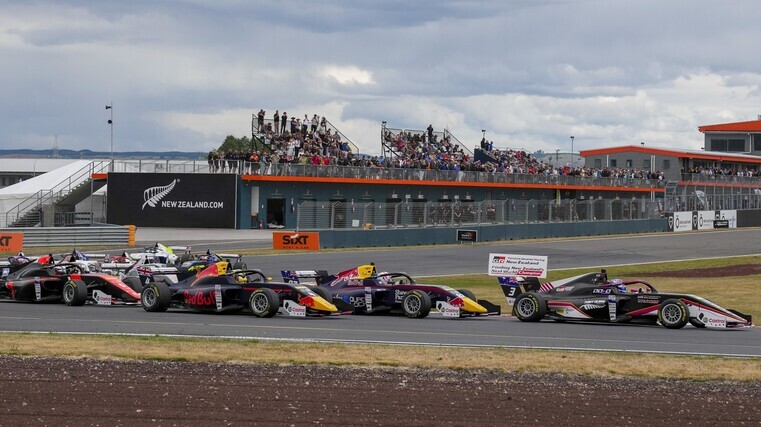Changes target closer racing

Changes to the format of the Castrol Toyota Formula Regional Oceania Trophy have been announced to help spice up the action and give drivers better value for money.
Organisers Toyota Gazoo Racing NZ (TGRNZ) have confirmed further alterations to the series alongside the switch from a five-weekend championship to four to avoid clashes with northern hemisphere testing in IndyNXT and European junior formulae.
Aside from the Grand Prix weekend, there will now be four races per weekend with qualifying and two races each day on Saturday and Sunday at the first three weekends in the single-seater competition.
The first three races of each weekend will be of 70km duration, while the longer feature races on Sunday afternoons will be 90km.
The New Zealand Grand Prix weekend, which returns to Highlands Motorsport Park in 2026, has an unchanged format. This means there will be Grand Prix-type qualifying with two knockout sessions and a final shootout for the top 10 grid spots.
The Grand Prix race itself is the longest challenge of the season at 109km and remains one of only two races outside of F1 – along with the Macau GP – to have official recognition as a Grand Prix event from the FIA.
Total mileage drivers can accumulate in the Oceania series, which TGRNZ says is arguably the world’s best value for money FIA Formula Regional Championship, remains more than 2,900km.
Among other changes to the format, five new sets of Pirelli tyres will be allocated to each driver per weekend, up from the current total of three sets.
Two sets must be used over Thursday’s two 30-minute test sessions and Friday’s three 30-minute free practice sessions. That will leave drivers with three new sets each race weekend for two 15-minute qualifying sessions and four races.
A new push-to-pass system will also be introduced on the Toyota FT60 cars for the 2026 season, giving each car an additional 25 horsepower.
Nicolas Caillol, TGRNZ motorsport manager, says: “Push to pass and the extra tyres will definitely add new elements of strategy for both drivers and teams over the whole weekend and they are changes which are definitely designed to promote passing and closer racing.”





